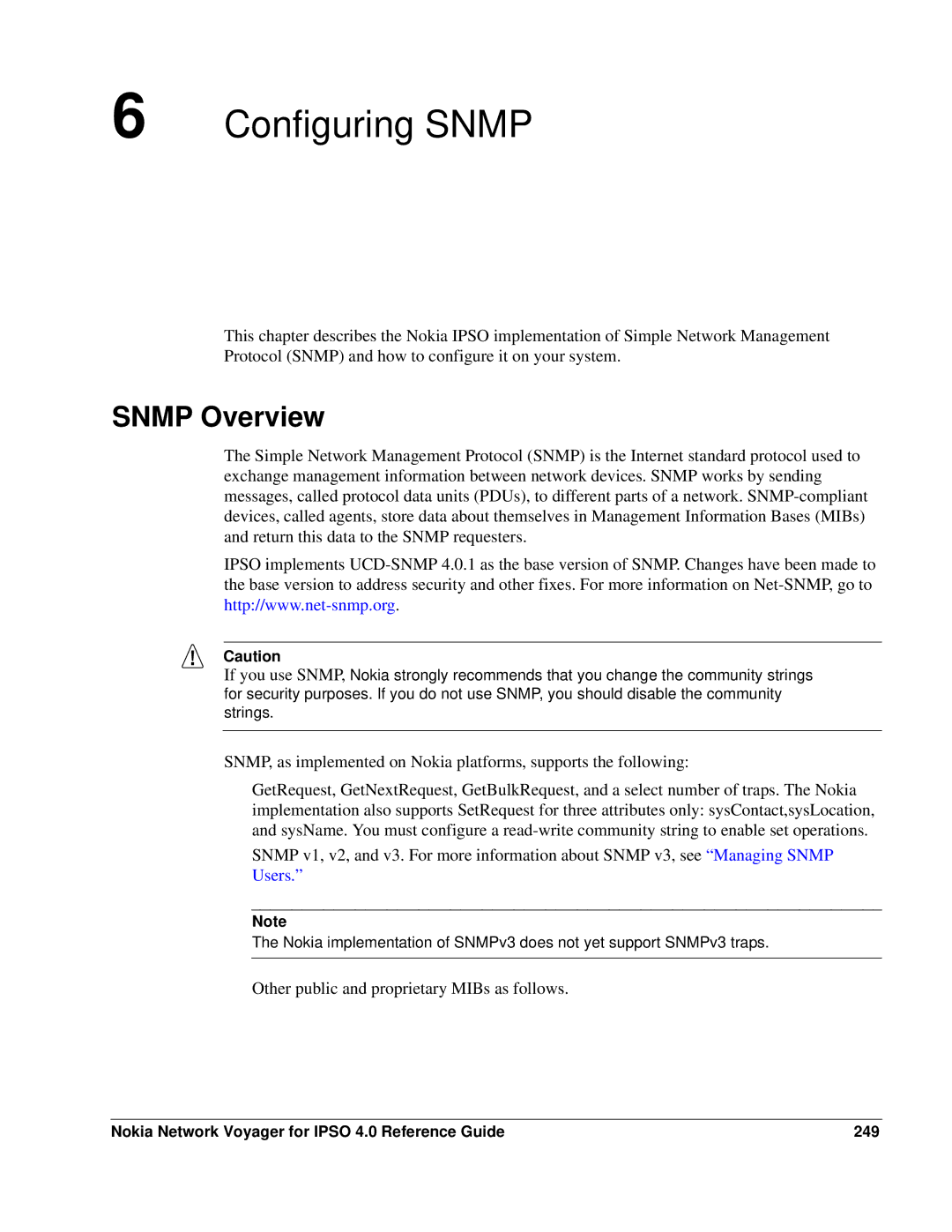
6 Configuring SNMP
This chapter describes the Nokia IPSO implementation of Simple Network Management Protocol (SNMP) and how to configure it on your system.
SNMP Overview
The Simple Network Management Protocol (SNMP) is the Internet standard protocol used to exchange management information between network devices. SNMP works by sending messages, called protocol data units (PDUs), to different parts of a network.
IPSO implements
Caution
If you use SNMP, Nokia strongly recommends that you change the community strings for security purposes. If you do not use SNMP, you should disable the community strings.
SNMP, as implemented on Nokia platforms, supports the following:
GetRequest, GetNextRequest, GetBulkRequest, and a select number of traps. The Nokia implementation also supports SetRequest for three attributes only: sysContact,sysLocation, and sysName. You must configure a
SNMP v1, v2, and v3. For more information about SNMP v3, see “Managing SNMP Users.”
Note
The Nokia implementation of SNMPv3 does not yet support SNMPv3 traps.
Other public and proprietary MIBs as follows.
Nokia Network Voyager for IPSO 4.0 Reference Guide | 249 |
